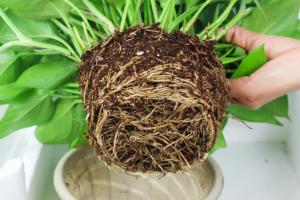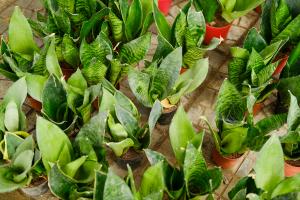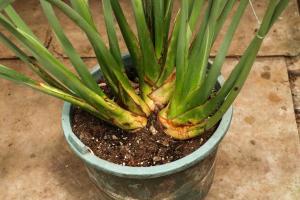How Do CAM Plants Reduce Water Loss?
CAM plants, also known as Crassulacean Acid Metabolism plants, are a special group of plants that have evolved a unique way of photosynthesizing in order to reduce water loss. These plants are found in arid environments, such as deserts and savannas, where water is scarce and temperatures are high. In this article, we will explore how CAM plants reduce water loss and what makes them so unique.
What is Crassulacean Acid Metabolism?
Crassulacean Acid Metabolism, or CAM, is a type of photosynthesis that CAM plants use in order to conserve water. Unlike the more common C3 and C4 photosynthesis pathways, which take in carbon dioxide during the day, CAM plants only take in carbon dioxide at night. During the nighttime, the stomata of CAM plants open and take in carbon dioxide, which is then stored in the form of an acid called malate. During the day, the stomata are closed to reduce water loss and the malate is broken down into carbon dioxide, which is then used for photosynthesis.
Adaptations of CAM Plants
CAM plants have several adaptations that allow them to successfully utilize the CAM pathway. One such adaptation is the ability to open their stomata at night, when the air is cooler and more humid, which reduces water loss through evaporation. Additionally, CAM plants have thick, succulent leaves and stems that store water, allowing them to survive for extended periods without rainfall. Finally, CAM plants have a highly efficient photosynthetic pathway that allows them to produce energy with minimal water loss.
Examples of CAM Plants
There are many examples of CAM plants, including cacti, succulents, and bromeliads. Cacti are perhaps the most well-known example of CAM plants, with their thick, spiny stems and water-storing abilities. Succulents, such as aloe vera and agave, are also CAM plants that have thick leaves and stems for water storage. Bromeliads, which are often found in tropical climates, also utilize the CAM pathway to survive in environments with limited water resources.
The Benefits of CAM Plants
CAM plants offer several benefits to the environment and to humans. Firstly, these plants are able to grow and survive in climates that are too extreme for most other plant species, which helps to maintain biodiversity in these areas. Additionally, CAM plants have been used for centuries by indigenous communities for food, medicine, and other practical purposes. For example, the aloe vera plant has been used for centuries as a natural remedy for sunburns and other skin ailments. Finally, CAM plants help to reduce greenhouse gas emissions by sequestering carbon dioxide from the atmosphere.
Conclusion
CAM plants are a fascinating group of plants that have evolved an efficient way of photosynthesizing in order to reduce water loss. With their ability to survive in harsh environments and provide numerous benefits to humans and the environment, these plants are truly remarkable. By understanding how CAM plants work, we can better appreciate the intricate workings of nature and the importance of biodiversity.

 how many times do yo...
how many times do yo... how many planted tre...
how many planted tre... how many pine trees ...
how many pine trees ... how many pecan trees...
how many pecan trees... how many plants comp...
how many plants comp... how many plants can ...
how many plants can ... how many plants and ...
how many plants and ... how many pepper plan...
how many pepper plan...
































